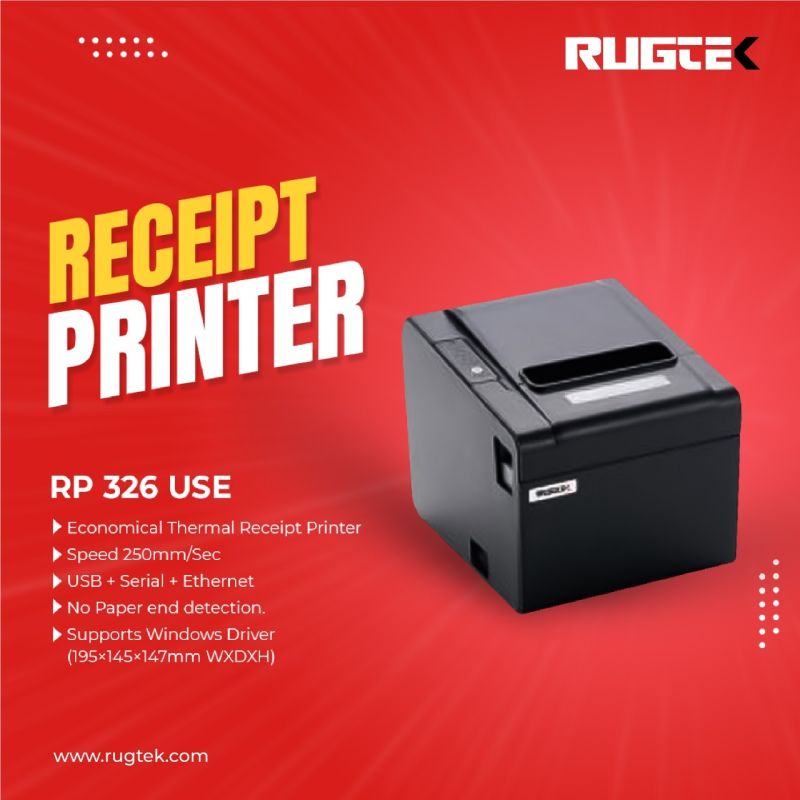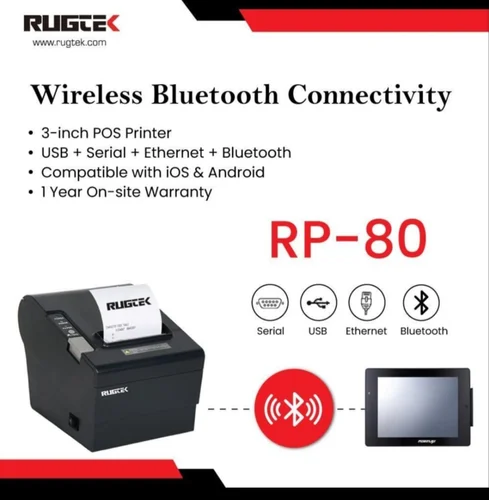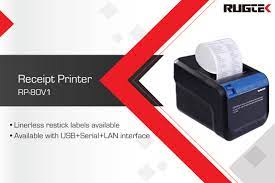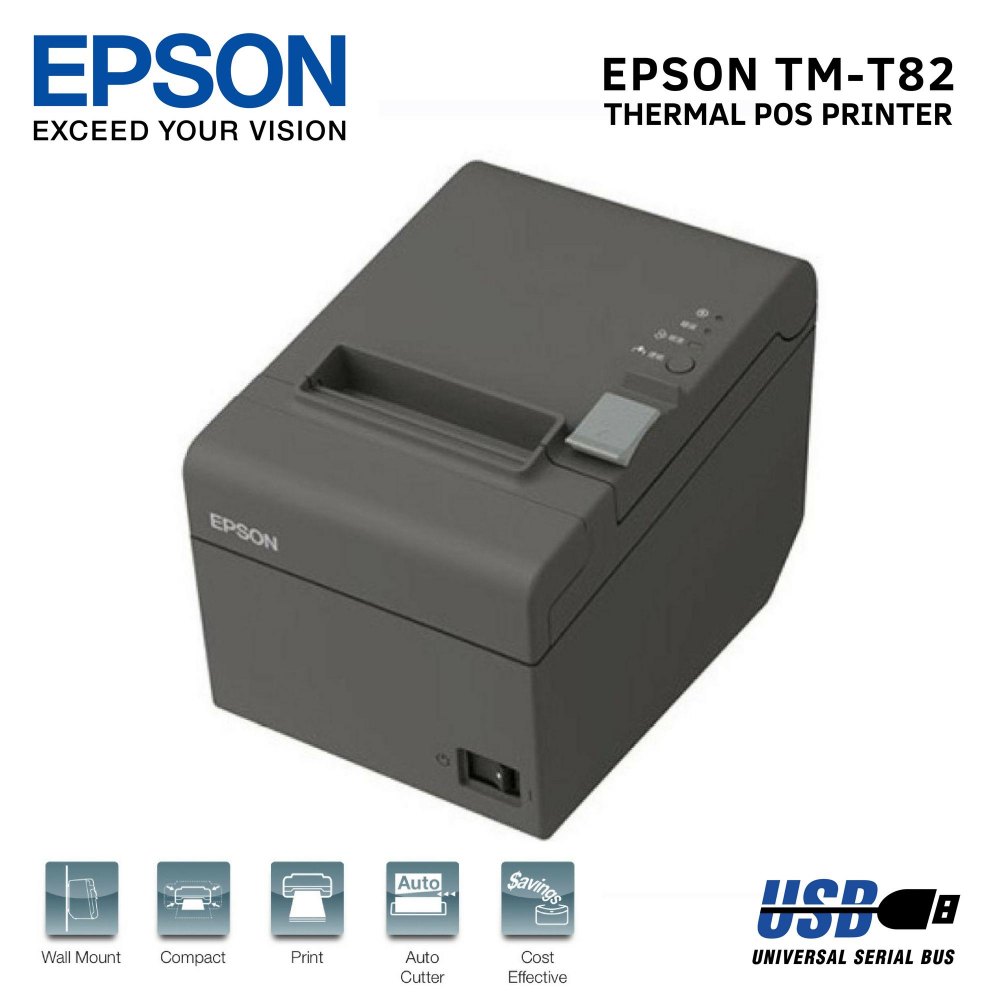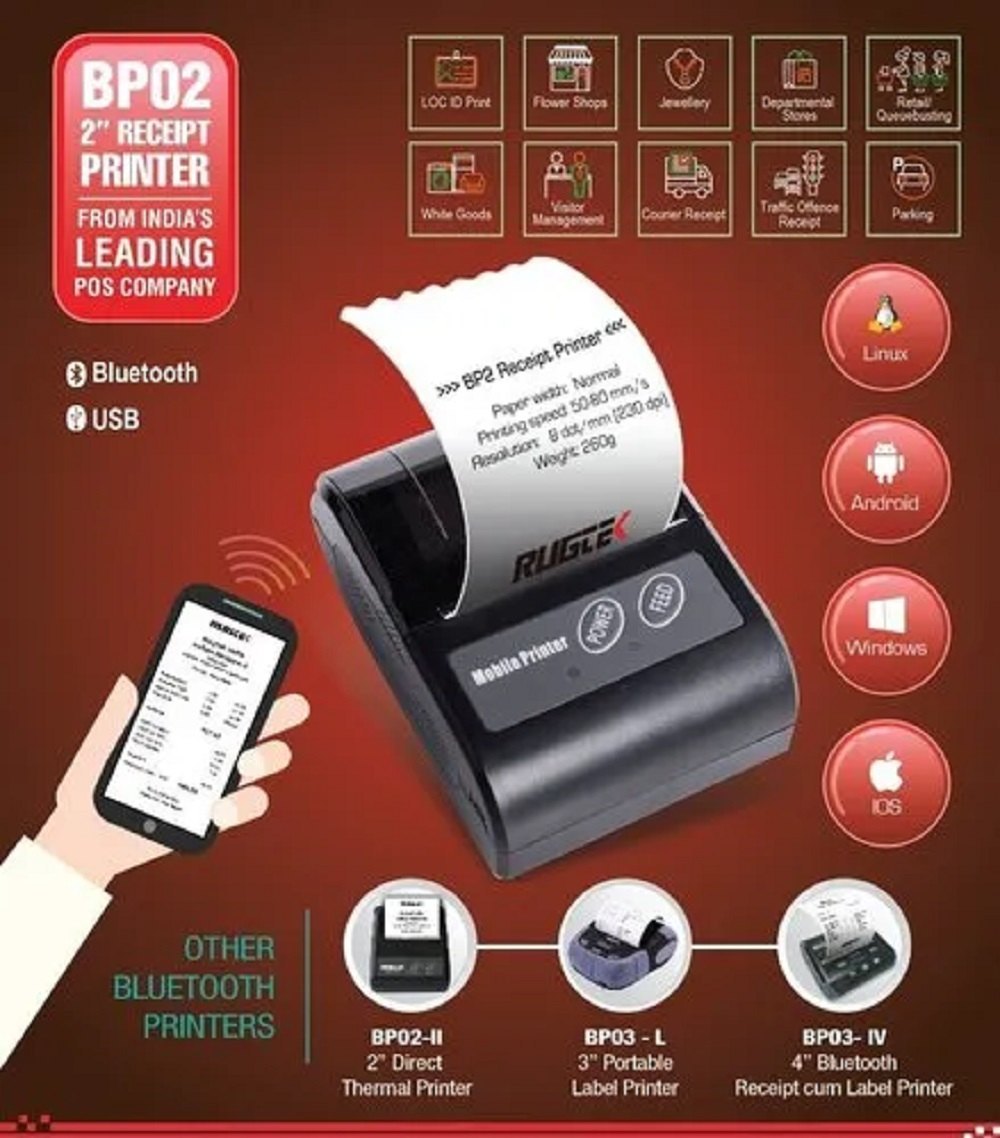THERMAL BILLING PRINTERS
Advantages of Thermal Billing Printers in Hospitality and Retail Segments:
Thermal billing printers are essential tools in the hospitality and retail sectors, providing a range of advantages that enhance customer experience, streamline operations, and improve efficiency. Here's why thermal billing printers are indispensable in these industries:
- 1. Speed and Efficiency: Thermal printers offer rapid printing speeds, allowing for quick generation of receipts, bills, and orders. This efficiency reduces waiting times for customers and enhances overall service speed.
- 2. High-Quality Printing: Thermal technology ensures crisp, clear, and legible prints, even on small font sizes and intricate graphics. This professional appearance enhances the brand image and provides a polished customer experience.
- 3. Quiet Operation: Thermal printers operate quietly, which is particularly important in quiet environments such as upscale restaurants, where noise disruption is unwelcome.
- 4. Compact Design: Thermal billing printers are compact and space-saving, making them ideal for locations with limited counter space. Their sleek design also adds to the aesthetic appeal of the establishment.
- 5. Easy Paper Loading: Thermal printers feature simple paper loading mechanisms, minimizing downtime due to paper jams and making it easy for staff to replace paper rolls.
- 6. Cost-Effective: Thermal printers require no ink or toner, reducing operational costs associated with consumables. This translates to cost savings in the long run.
- 7. Versatile Connectivity: Modern thermal printers offer multiple connectivity options, including USB, Ethernet, Bluetooth, and Wi-Fi. This flexibility ensures seamless integration into existing POS systems.
- 8. Customization Options: Thermal printers allow businesses to print customized logos, promotional messages, and QR codes on receipts, enhancing brand visibility and customer engagement.
- 9. Order Accuracy: In the hospitality sector, thermal printers are used for KOT (Kitchen Order Ticket) printing. This reduces communication errors between the front-of-house and kitchen staff, ensuring accurate orders.
- 10. Quick Service in Fast-Food and Cafes: In fast-food chains and cafes, thermal printers enable fast and efficient order processing, contributing to shorter waiting times and improved customer satisfaction.
- 11. Order Tracking: Thermal printers facilitate order tracking by generating sequential order numbers on receipts, helping staff manage and deliver orders accurately.
- 12. Compliance and Records: Thermal billing printers generate clear, easy-to-read receipts that can serve as records for customer transactions. This is particularly crucial for tax and accounting purposes.
- 13. Reduced Waste: No need for ink cartridges or ribbons means less waste generated, contributing to environmentally-friendly operations.
In conclusion, thermal billing printers offer numerous advantages in the hospitality and retail sectors, enhancing efficiency, accuracy, and customer satisfaction. From generating clear receipts to facilitating swift order processing, these printers play a pivotal role in creating seamless and positive customer experiences.
Advantage of using thermal Printer in kitchen (KOT) PRINTER
KOT printers, or Kitchen Order Ticket printers, play a crucial role in the hospitality industry, particularly in restaurants, cafes, and other food service establishments. These specialized printers are used to streamline communication between the front-of-house staff, such as waitstaff or cashier, and the kitchen staff, ensuring accurate and efficient order processing.
Advantages and Significance
Order Accuracy
KOT printers greatly enhance order accuracy by ensuring that kitchen staff receive clear and legible instructions. This minimizes errors and reduces the chances of incorrect dishes being prepared.
Efficiency
KOT printers facilitate efficient communication between the front and back of the house, allowing kitchen staff to start preparing orders immediately upon receipt. This leads to faster order fulfillment and reduced wait times for customers.
Real-Time Updates
KOT printers can be integrated with the POS system, enabling real-time updates. This means that any changes made to an order (e.g., additions, modifications, cancellations) are instantly communicated to the kitchen staff.
Customization
KOT printers can be customized to match the specific layout and needs of a restaurant. This includes options to include the table number, server name, and other relevant details.
Order Tracking
KOT printers often include sequential order numbers, making it easy for both front-of-house and kitchen staff to track and manage orders. This helps ensure that orders are delivered to the correct tables.
Reduced Communication Errors
With KOT printers, there is less reliance on verbal communication between the front and back of the house. This reduces the likelihood of misunderstandings or misinterpretations.
Enhanced Collaboration
KOT printers promote better collaboration between different departments in a restaurant, leading to smoother operations and improved teamwork.
In essence, KOT printers are a fundamental tool that ensures efficient and accurate communication between the front-of-house and kitchen staff. By minimizing errors, reducing wait times, and enhancing collaboration, KOT printers contribute to smoother restaurant operations and improved customer satisfaction.
HOW KOT PRINTER CONNECT TO POS SYSTEM ?
KOT printers connect to the Point of Sale (POS) system through various connectivity options, allowing for seamless communication between the front-of-house and the kitchen. The integration between KOT printers and POS systems ensures that orders are accurately and efficiently transmitted to the kitchen staff for preparation. Here's how KOT printers typically connect to POS systems:
1. Wired Connection (Ethernet or USB):
Many KOT printers have Ethernet or USB ports for direct wired connection to the POS system. An Ethernet cable or USB cable is used to establish a physical connection between the POS terminal and the KOT printer. This method ensures fast and stable communication between the two devices.
2. Wireless Connection (Wi-Fi or Bluetooth):
Some KOT printers support wireless connectivity options such as Wi-Fi or Bluetooth. They can connect to the same Wi-Fi network as the POS terminal or establish a Bluetooth pairing. This wireless connection allows for flexibility in printer placement and eliminates the need for physical cables.
3. Network Printing:
In larger establishments, KOT printers may be set up as network printers. This involves connecting the KOT printers to the local network, either via Ethernet or Wi-Fi. The POS system sends print commands to the KOT printer's network IP address, which then processes and prints the order tickets.
4. Cloud Integration:
Cloud-based POS systems can communicate with KOT printers over the internet. Orders entered into the cloud POS are sent to the cloud server, which then pushes the order data to the respective KOT printers in the kitchen. This method is suitable for businesses with multiple locations or when real-time updates are essential.
5. POS Software Integration:
Modern POS software often includes built-in features or plugins for seamless integration with KOT printers. The POS system and KOT printer may use standardized protocols or APIs (Application Programming Interfaces) to exchange order data.
6. POS System Settings:
Within the POS system's settings or configuration, users can specify the type of KOT printer being used, its connectivity method, and any specific parameters for order formatting and printing.
